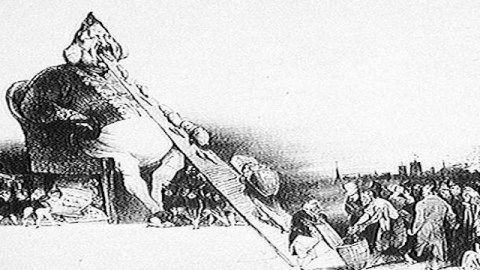Talk About a Global Obesity Problem: Animals Are Getting Fatter Too

Obesity is a growing global health problem, and we all know why, don’t we? It’s the fault of corporations that sell corn syrup, and a starkly unequal society (why would you want to quit smoking if you’re trapped below the poverty level?) Or, if you prefer a different flavor of self-righteousness, how about: a lack of personal responsibility and moral fiber (nobody made you eat all those fries, mister). Ideologues on the left and on the right like to claim they have this one covered. So what I liked about this paper is the way it plays havoc with the usual talking points. It reports that over the past 50 years, as American people became fatter, so did American chimpanzees, rats, marmosets, dogs, cats and other animals. That can’t be because the chimps took office jobs and the cats got into eating out. Our public conversation about the causes of obesity is missing something.
In the paper, published last month in the Proceedings of the Royal Society B, Yann Klimentidis and his co-authors looked at animals’ adult body weight over the past five decades in 24 populations of eight different species that live around people—from wild rats in Baltimore to captive chimpanzees. Every one showed an increase in average body weight over time. As Carrie Arnold reported, the average weight of lab mice in the study rose 12 percent per decade, and captive marmosets gained an average of 9 percent per decade. Chimps, for some reason, are doing especially badly, as Travis Saunders noted at Obesity Panacea: Their average body weight has risen 33 percent per decade.
What’s causing this multi-species obesity epidemic? If it were humanity—if, for instance, people used to eating more themselves were giving more food to their dogs and cats and lab rats—then untamed populations shouldn’t have been affected. But the researchers found that feral animals were also getting pudgier. The street rats in Baltimore showed an average weight increase of nearly 7 percent per decade. That’s more than the captive rats in the study, whose average gain was 3 percent.
In any event, research protocols track precisely how animals are housed and fed, so Klimentidis et al. are sure that lab animals’ steady weight gain wasn’t caused by changes in their food or activities.
So what is the underlying cause? The answer, say the researchers, is to ideologues what garlic is to a vampire: We don’t know. A good overview of the possibilities is here(hat tip to Saunders, who recommends this very interesting paper). David Allison of the University of Alabama, one of the Royal Society B study’s authors, told Arnold he thinks the answer or answers likely will be found in industrial chemicals and viruses. It appears that the question’s wide open, to (I hope) the consternation of people who want us to believe they have figured obesity out.
Klimentidis, Y., Beasley, T., Lin, H., Murati, G., Glass, G., Guyton, M., Newton, W., Jorgensen, M., Heymsfield, S., Kemnitz, J., Fairbanks, L., & Allison, D. (2010). Canaries in the coal mine: a cross-species analysis of the plurality of obesity epidemics Proceedings of the Royal Society B: Biological Sciences DOI: 10.1098/rspb.2010.1890
Keith, S., Redden, D., Katzmarzyk, P., Boggiano, M., Hanlon, E., Benca, R., Ruden, D., Pietrobelli, A., Barger, J., Fontaine, K., Wang, C., Aronne, L., Wright, S., Baskin, M., Dhurandhar, N., Lijoi, M., Grilo, C., DeLuca, M., Westfall, A., & Allison, D. (2006). Putative contributors to the secular increase in obesity: exploring the roads less traveled International Journal of Obesity, 30 (11), 1585-1594 DOI: 10.1038/sj.ijo.0803326![]()





